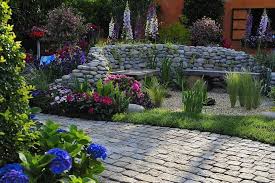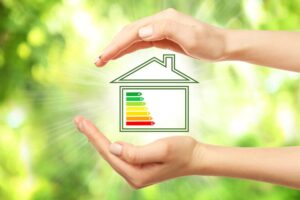Having a garden is a wonderful opportunity to create a space that benefits both you and nature. Having an eco-friendly garden doesn’t just mean leaving it to be overrun with plants and wildlife; it is simply about making more conscious choices about your garden design. This guide is here to show you three easy ways to make your garden more eco-friendly.
1.Choose Eco-Friendly Materials
There are many options you have when it comes to building materials for garden structures, but if you want something eco-friendly, you should choose some untreated local and natural building materials, like responsibly sourced local wood. This helps to reduce your carbon footprint, as you don’t need to get your timber delivered from across the country or even shipped across the globe. If possible, try to avoid cement, as this ubiquitous product contributes to more than 5 per cent of total global carbon emissions.
If you live in a city and don’t have many local options available to you, there are some companies that can help. Sites like https://www.ecompositeproducts.co.uk/ offer eco-friendly garden materials that do not rot, decay, split or splinter. There are eco materials out there that are both low maintenance and long-lasting!
Using permeable paving is another good way to make your garden more eco-friendly, as run-off caused by rain hitting non-permeable concrete causes flooding and impacts wildlife.
2.Use Natural Pest Control
The use of chemical pesticides has increased by 50% in the last 30 years. Chemical pesticides have many unintentional consequences, such as:
- Poisoning animals
- Contaminating plants
- Killing bees and reducing pollination.
There are many alternatives to using chemical pest control:
- If you’re bothered by greenfly, all it takes is a good burst with the hose to get them off plants.
- You can use copper rings to control slugs, which hate copper.
- You can use environmentally friendly netting like Environmesh to protect your plants.
- You can use natural pest control solutions like garlic and rhubarb leaf sprays.
- If you have any garden corners, you can leave them a bit messy, as this creates a good home for hedgehogs, which pay back the favour by eating slugs.
- You can build a small pond to attract many insects that can help your garden and wildlif.
-
Choose Appropriate Plants
When you choose your plants, you need to provide food and shelter for other animals. This is a staple of the eco-friendly garden, as food and shelter leads to beneficial habitats and healthy food chains. Local berries are a great source of food, so include trees that produce them – hawthorn is a popular example. It’s important to choose local berry plants as these are familiar to birds and local insects.
There has been a large movement towards creating naturalistic meadows, also known as ‘prairie-like’ plantings. These meadows are home to perennial flowers and ornamental grasses, which provide a beautiful but ecologically important habitat for a variety of animals and plants. They need some space to do this properly, but if you have that space, it is well worth it.










Be First to Comment